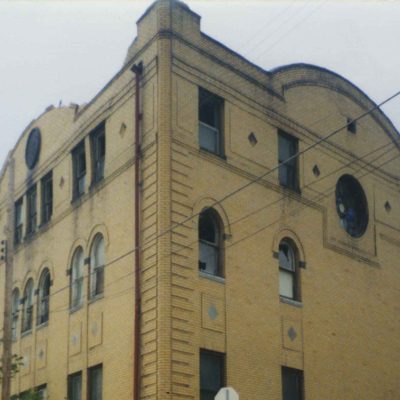
Machsikei Hadas Congregation was founded in Pittsburgh around 1896 by Jewish immigrants from the historic Galicia region of the Austria-Hungarian Empire that once stretched across parts of present-day Poland and Ukraine.[1]Katz, Harry. “Greetings from the President,” To Commemorate the Fortieth Anniversary of Congregation Machsikei Hadas (online). Several early members were from the city of Belz and followed the Belz Chasidic Dynasty. The name “Machsikei Hadas” (Defenders of the Faith) was almost certainly a reference to the Jewish political party and newspaper of the same name that emerged from Galicia around the same time. Like many congregations with strong Chassidic influence, the members of Machsikei Hadas were ethnically Ashkenazic but prayed according to the Sephardic nusach, or rite. [2]Sidney Santman oral history, August 25, 1994. By the mid-1930s, the congregation was no longer exclusively associated with Gallitzianers.[3]Fassber, B. “The Significance of Our Celebration,” To Commemorate the Fortieth Anniversary of Congregation Machsikei Hadas (online).
Machsikei Hadas met in a rented storefront at 65 Crawford Street in the Hill District until 1911, when it laid the cornerstone on a newly built synagogue at the corner of Wylie Avenue and Granville Street.[4]“Laying Corner Stone for Machsikei Hadas Synagogue,” Gazette Times, July 17, 1911 (online—Newspapers.com). The new synagogue was across the street from the original Hill District branch of the Carnegie Library and diagonal from the original location of the Hebrew Institute. With the migration of the Jewish population to the east, Machsikei Hadas relocated to a renovated house at 814 N. Negley Avenue in the East End in 1953.[5]“Machsikei Hadas Cong. To Dedicate New Synagogue,” Jewish Criterion, Oct. 23, 1953 (online).
In addition to the congregation, Machsikei Hadas had a chevra kadisha and a chevra tehillim and later a Men’s Club. It was also the home of the First Hebrew Austrian Beneficial Society. Machsikei Hadas established a cemetery in Reserve Township around 1909.[6]“Peace reigns at Jewish cemetery,” Pittsburgh Press, June 18, 1986 (online part 1, part 2—Newspapers.com). The grounds are now managed by the Jewish Cemetery & Burial Association.
Spiritual leaders include Rabbi Moshe Shimon Sivitz, Rabbi Samuel Zahler, and Rabbi Wolf Leiter, who led the congregation from 1921 until his death in 1974.
References
| ↑1 | Katz, Harry. “Greetings from the President,” To Commemorate the Fortieth Anniversary of Congregation Machsikei Hadas (online). |
|---|---|
| ↑2 | Sidney Santman oral history, August 25, 1994. |
| ↑3 | Fassber, B. “The Significance of Our Celebration,” To Commemorate the Fortieth Anniversary of Congregation Machsikei Hadas (online). |
| ↑4 | “Laying Corner Stone for Machsikei Hadas Synagogue,” Gazette Times, July 17, 1911 (online—Newspapers.com). |
| ↑5 | “Machsikei Hadas Cong. To Dedicate New Synagogue,” Jewish Criterion, Oct. 23, 1953 (online). |
| ↑6 | “Peace reigns at Jewish cemetery,” Pittsburgh Press, June 18, 1986 (online part 1, part 2—Newspapers.com). |